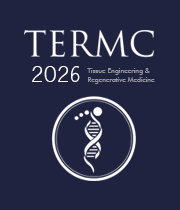Retina Horizontal Cells
Retina Horizontal Cells are specialized neurons found in the outer molecular layer of the retina, contributing to the intricate neural circuitry involved in visual processing. These cells play a crucial role in modulating signals within the retina by forming lateral connections between photoreceptor cells and bipolar cells. Divided into two main types, A and B, horizontal cells mediate inhibitory interactions that enhance the contrast and spatial resolution of visual information. A-type horizontal cells connect to cones, the photoreceptor cells responsible for daylight vision, while B-type horizontal cells connect to both rods and cones. The inhibitory influence of horizontal cells prevents the spread of signals laterally across the retina, facilitating the detection of finer details and edges in visual stimuli. Dysfunction in horizontal cell signaling may contribute to visual impairments, including changes in contrast sensitivity. The intricate network formed by horizontal cells is crucial for refining visual information before it is transmitted to higher visual centers in the brain. Ongoing research in retinal horizontal cells provides valuable insights into the complexities of visual processing and holds potential implications for understanding and treating various retinal disorders.

Nagy Habib
Imperial College London, United Kingdom
Lucie Bacakova
Institute of Physiology of the Czech Academy of Sciences, Czech Republic



Title : AI-integrated high-throughput tissue-chip for space-based biomanufacturing applications
Kunal Mitra, Florida Tech, United States
Title : Stem cell technologies to integrate biodesign related tissue engineering within the frame of cell based regenerative medicine: towards the preventive therapeutic and rehabilitative resources and benefits
Sergey Suchkov, N.D. Zelinskii Institute for Organic Chemistry of the Russian Academy of Sciences, Russian Federation
Title : In vitro evaluation of lyophilized Dedifferentiated Fat cells (DFAT) impregnated artificial dermis
Kazutaka Soejima, Nihon University, School of Medicine, Japan
Title :
Nagy Habib, Imperial College London, United Kingdom
Title :
Alexander Seifalian, Nanotechnology & Regenerative Medicine Commercialisation Centre, United Kingdom
Title : The regenerative medicine of the future
Marco Polettini, DVM, Italy